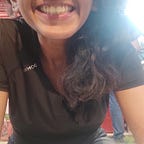Chik Shampoo — Billion Dollar Baby
Genius is making complex ideas simple, not making simple ideas complex.
As a budding UX designer, I have always been curious to know how products are made, and the impact it makes on us. I came across this stunning case study of CavinKare, that believed in the motto — “What the rich man can enjoy, the common man should be able to afford”.
Back in the 1980's, which was the starting of digital era all around the world, India was still an underdeveloped country and FMCG like Shampoos and perfumes were considered to be luxury products. If we try to look at the affordability of people in India from an eagle’s eye view, it is very similar to the great pyramid of Giza. Wealthy families dominated the purchase power who were at the apex of pyramid. All the brands focused on selling luxury products to the upper segment of pyramid as they believed that they could not do a “viable” business for other people. This happened in the time when the highest salaries of working professionals were in the range of Rs 1000–3000 per month. Sunsilk Shampoo was sold in 100 millilitres for Rs 40 at the time when people, on an average used to spend Rs 500 per month on essentials. When brands like Sunsilk, Clinic Plus, and imported brands took over the shampoo market, a simple middle class Indian decided to strip the elite tag associated with Shampoo use.
CK Ranganathan, son of an agriculturist and pharmaceutical packaging entrepreneur, decided to leave his safe job and home with savings of Rs 15000 to make a sachet revolution in India. Before entering into the shampoo market, he did a market survey on the people residing in rural areas and observed that people spent Rs 2 per month on sachets. On an average, if a person washes his/her hair 4 times a month, all they have to do is spend 50 paise a week. This billion dollar idea made CK Ranganathan sell Chik shampoo sachets for 50 paise in 1983. This marked the beginning of CavinKare’s journey. This brand sold about 1 million sachets in that year alone. What started with a capital of Rs 15,000 turned out to be a 1.1 billion empire in the year 2012.
Take Away
- Instead of spending millions on taking a product to the market and then anticipating people’s feedback, using just a fraction of that money for production and shipping is what i call a minimal fucking viable product.
- If we are uncertain of the response given by the people we serve to, selling it for free / low cost or partnering with other brands to see the reactions of the people if they like it or not is a perfect way to test a product market fit.
- Taking a break from the everyday hustles and just looking at the smaller things in life can help us create opportunities out of it.
